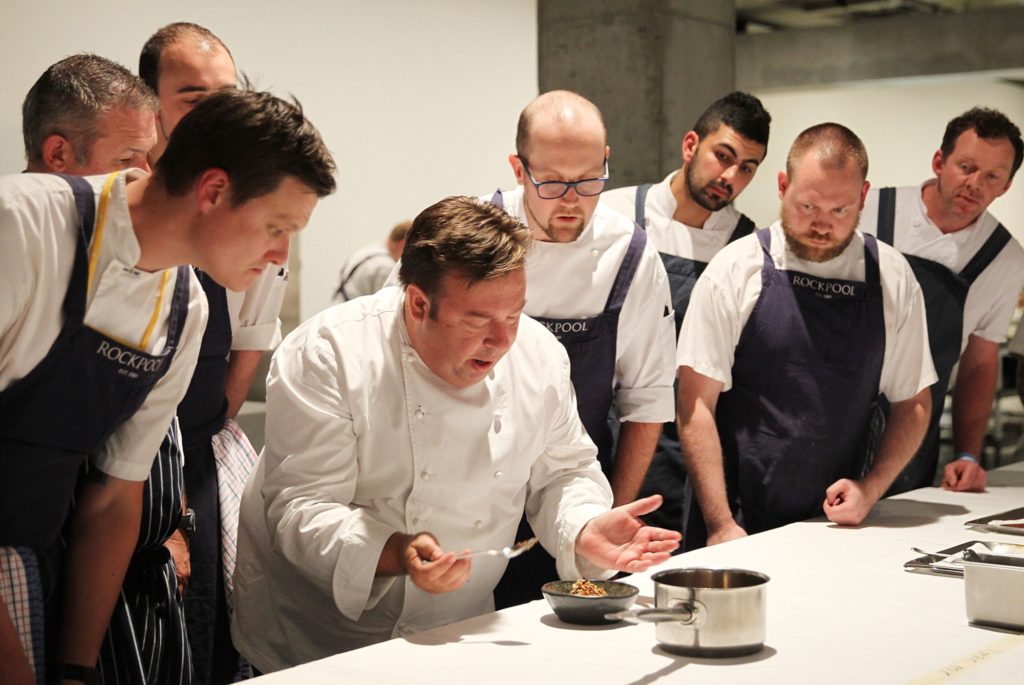The potential power of food and how it changes how travellers interact and experience destinations is oftentimes overlooked by marketing strategies
– it's time to change this harness its true power.
What about food?
When people think of city marketing, certain attractions or industries oftentimes come to mind. Toronto has the CN Tower and the Maple Leafs, Waterloo has a burgeoning software engineering industry, and Whistler British Colombia has the ski resort. By making their respective cities unique with a competitive advantage over others, these attractions, adventures, and industries make sense both to visitors and city marketers alike.
Despite this uniqueness though, one factor links these three destinations together alongside every other destination and it usually get forgotten by city marketers; it’s food.
Food is Everywhere
Everyone needs to eat
Whether your city has your country’s largest and fastest growing tech hub, it’s tallest free-standing structure, or a world-renown ski mountain, tourists of all three need to eat three times a day. Food is also an industry that exists in every city no matter its size, sophistication, or lack-thereof; food is universal.
While large cities can offer a larger array of food variety to boost tourism. Small towns can just as successfully showcase how intimate their connection with farmers and local suppliers are for discerning foodies. This makes the potential for food-based city marketing and using food as a medium to shape a region’s iconic image extremely important.

Food may be commonplace in our everyday lives, but its potential power for city marketers should not be discounted.
Food is a powerhouse
The data backs this claim up too: according to Manadala Research’s “American Culinary Traveler Report” (2013), the amount of tourists who reported travelling to a city or region explicitly for its food-based activities rose from 40% to 51%.
Likewise, the University of Florida’s “A Flash of Culinary Tourism” report stated food service-related tourism earnings exceeded $201 billion in 2012 accounting for almost a quarter of all tourism related earnings.
Food tourism is a powerhouse industry. And it’s not limited to cities like Paris, who’s traditional histories make them iconic food destinations. Rather, smaller regions across North America have been tapping into this opportunity. They are now incorporating food into their marketing strategies.
To treat food as something less important than driving big business or physical experiences into a city, is a mistake that discounts something your region already possesses. It also ignores the reality that everyone in every city already interacts with food everyday, regardless.
How to Leverage the Power of Food
How to be effective
Learning how to incorporate this growing trend in city marketing into pre-existing strategies is therefore increasingly important. To be effective, all interested stakeholders of a city or region need to be involved in a collective effort to broadcast one uniform message to those visiting.
When asked, the Ontario Culinary Tourism Alliance (OCTA) stressed the need for stakeholders to join together in taking a collectively active approach to marketing a city’s food-related image.
More than a a few restaurants
This means a region’s food-based marketing needs to encompass more than just a single restaurant or dish to work best. It needs to be immersive enough that individuals can link separate experiences throughout the city together. And it needs to draw an association that’s authentic and iconic to where they have just visited.
OCTA pointed towards Waterloo Ontario’s claim-to-fame as the home of Canada’s largest craft-beer festival offering hundreds of local and craft-Canadian made beers, wines, spirits, and ciders to visitors each year, as an example. Rather than cloistering this food activity to one occasion though, many of the city’s restaurants have leveraged the region’s interest in craft beers. And they resultantly offer large craft-selections in their menus year round.
Clear benefits
The benefits are twofold. On the one hand, this gives craft breweries the insurance of and opportunity to product for an embedded local market. On the other hand, it has also fostered a strong, organic, and authentic craft-beer community. A community that is noticeable to tourists when they arrive. And it is even capable of convincing them to try a new alcoholic offering, rather than their certain tried-and-true default drink choice.
By instilling a culture wherein restaurants and food vendors have permanently adopted craft beer into their offerings, Waterloo’s situation has met the needs of its food, tourism, and local business stakeholders. And it has done this all while producing a uniform message.
Niagara on the lake stands as another example of the same concepts at play. The region’s viticulture roots perfectly compliment the city’s upscale gambling and entertainment industry. It is making food and the economic driving for of the city go hand-in hand. While tourists get a chance to see Canada’s most spectacular falls, they also get to drink some of North America’s best wines – everyone wins.
Combining food with tech for delectable marketing outreach
User generated content
To the benefit of city marketers, producing and dispersing uniform messages have become easier with the advent of technological offerings. And with the adoption of social media platforms, especially amongst younger tourists. Whereas a city had to rely on leveraging its traditional iconic food-related identity to garner tourists in the past. Now publicizing the same message has shifted from falling solely on the agency’s behalf, to also being done by tourists themselves.
Everyone with a cellular device has access to an internet connection, a formidable camera, and multiple social platforms where self-taken experience-documenting photography reigns supreme. Platforms like Yelp, Instagram, Facebook, and Map Your City amplify peoples’ lived experiences into individual marketing campaigns for prospective tourists to use as reasoning for adding your city to their list.
Recommended by friends and influencers
Tourists are taking and publishing more pictures of their experiences than ever before. But now also, when researching what to do in the cities they are travelling to, they are consulting fellow travellers and social media contacts. This oftentimes eclipses the pull of traditional advertising.
Authentic, positive, and legitimately lived experiences and memories of others now hold more advertising sway. Transmission is free and the messages being shared often, receive more consumer trust that what a television or billboard ad can accomplish.
Power of social media
Tourism Australia’s social media campaign
When Tourism Australia took notice of the power of food-based marketing, their resulting experience stands as validation to the immense potential of incorporating social media platforms into their marketing strategies.
During a day-long event, the agency aggregated over 80 influential social media personalities together for an event titled ‘Invite the World to Dinner’ and used social media platforms to document the festivities. The event garnered hundreds of thousands of impressions across the agency’s social media platforms and brought considerable attention to their branding keywords.
The hashtag #restaurantaustralia alone received 190,000 impressions while the rest of their keywords experienced an immediate discovery rate 7.3x’s higher than normal.
By simply bringing together influential personalities and creating a food-themed event that was easily documentable on social media, the agency generated intense interest in Australia’s food offerings and the specific destinations advertised during the event.
Just like food, social media is a platform that should not be disregarded by those looking to market their cities and regions; it’s infrastructure is already in place and its audiences are hungry for content to interact with.

Chefs and culinary artists gather together while preparing some of the dishes served at Tourism Australia’s “Invite the World to Dinner”.
Market validate what message resonates and what not
In tandem, social media also provides city marketers with a sandbox that lets them see what’s working and what’s not. By monitoring how a strategy’s messaging and resulting experiences are being met and interacted with by consumers online, savvy stakeholders and agencies are able to translate this data into metrics that let them gauge their market’s interest in certain food-related activities and offerings.
Whether city marketers choose to use social media and food-based strategies or not, tourists and consumers are still going to use both when documenting their daily experiences. To not tap into this immense source of data and powerful method of garnering tourists is to ignore what exists in your city already and neglect what technology can offer city marketers in this day in age.
So, what are you waiting for?
All in all, food is something that impacts everyone everyday no matter where they live or choose to travel to. The food industry may be nothing new nor are its record-breaking profits. However, incorporating food into a city’s marketing strategy is brand new.
When one considers the data and other cities’ success with these strategies though, it becomes clear that food is something here to stay. And it is something highly capable of shaping how tourists interact with the destinations they travel to.
By incorporating food into your marketing strategy, you’re effectively leveraging a resource that already exists in your local area – so why not use Map Your City to streamline and empower your food-based strategy?
Read more
The latest from Map Your City right to your inbox? Subscribe to our newsletter and Map Your City updates you on the latest news & location marketing trends, valuable resources, places we love and new platform features. Unsubscribe any time or update your preferences.
- “The American Culinary Traveler Report” – Mandala Research (2013)
- “A Flash of Culinary Tourism: Understanding the Influence of Online Food Photography on People’s Travel Planning Process on Flickr” – Bingjie, Lui, William C. Norman, and Lori Pennington-Gray (2013)
- Ontario Culinary Tourism Alliance
- Tourism Australia’s ‘Invite the World to Dinner’ #restaurantaustralia
Tell your stories beautifully – everywhere – with Map Your City.
Our mobile app, mapping & marketing tools will help you to connect with your community, engage with locals, businesses and visitors and tell your authentic stories everywhere.







